When I got my first cat, Ben, I had an elderly acquaintance who liked to give me frequent, feline-friendly tips for keeping Ben happy and healthy. I always thought of Ruth as highly qualified. After all, she had seven cats of her own. She told me that in her house, holidays and special occasions were always celebrated by serving her cats a huge bowl of milk or cream.
From what I can tell, Ruth wasn’t necessarily alone in this practice. Most of us routinely associate cats with milk or milk products. The Internet is brimming with photos showing cute kitties licking milk from their whiskers or dabbing their curious paws in cream-filled saucers. It’s commonly believed that our cats derive important health benefits from these dairy products.
Unfortunately, I eventually learned this is not true. As I found out with Ben, milk doesn’t necessarily do a body good when that body belongs to your cat. Here are insights I learned from my holistic vet, who specialized in animal nutrition.
1. Cow’s milk is different than cat’s milk
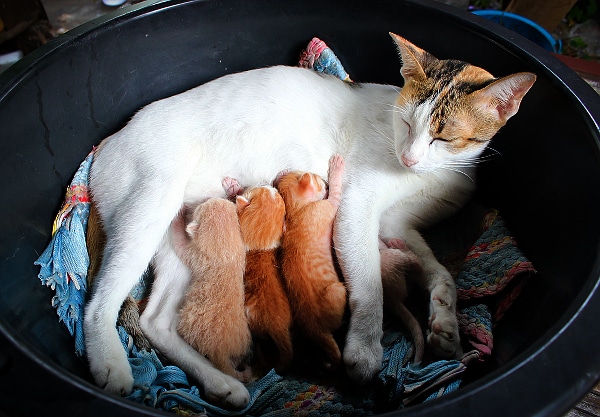
When it comes to kittens, there’s a whole lot to gain from milk … mama cat milk, that is. A mother feline’s milk has the optimum balance of nutrients for her babies. Apparently other types of milk don’t necessarily offer this balance — and many kittens, like Ben, have trouble digesting the higher proportion of lactose in cow’s milk. In fact, if you adopt an unweaned or orphaned kitten (like I did with Ben), I learned it’s healthier to feed that kitty a special replacement formula instead of dairy milk from the grocery store. You can find these feline formulations at most well-stocked pet supply shops.
2. Many felines are lactose intolerant
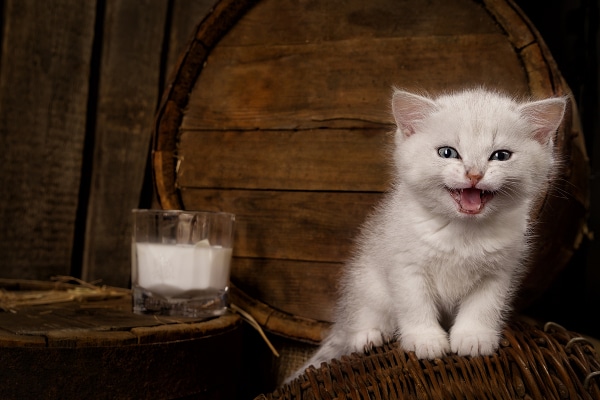
Just like with humans, it’s common for felines to develop lactose sensitivity over time. Lactase is the enzyme used to digest lactose, and this enzyme tends to ebb naturally as bodies age. My vet said it’s often wise to stop feeding kittens any type of milk once they’re fully weaned, because it can prompt digestive troubles in full-grown cats. Ben, for instance, experienced bouts of tummy upset, skin itchiness, flatulence, even occasional diarrhea and vomiting before we figured out that milk was the cause.
3. A proper cat diet is rich in protein
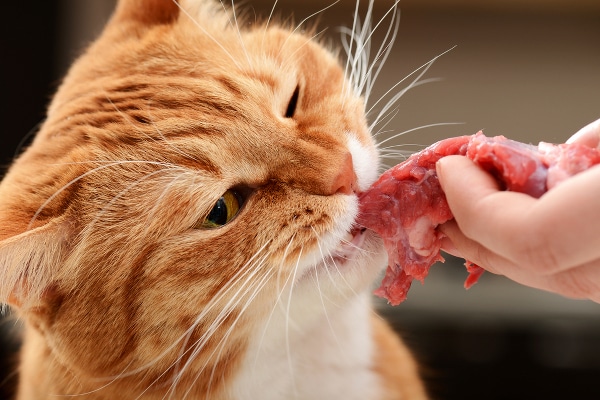
Cats are “obligate carnivores,” meaning that they require meat protein to survive. As long as your cat’s daily diet provides the proper balance of meat protein, dairy milk doesn’t offer much except a bunch of extra calories that can promote weight gain. In fact, my vet told me that allowing Ben to have milk regularly could potentially dilute the nutrients his body needed to absorb from his food. Of course by this time, most of the messier digestive issues mentioned had already caused us to rethink this drink.
4. Water is better than milk for cats
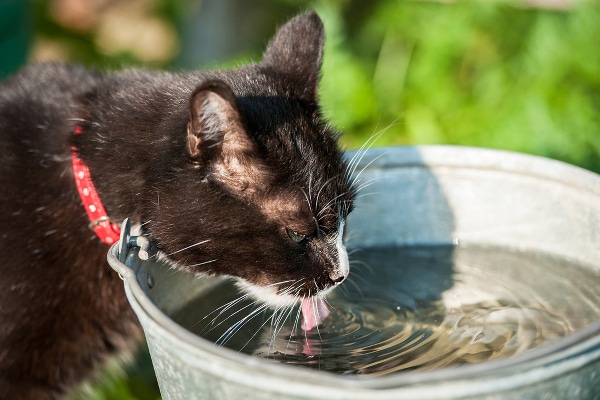
Milk aside, cats need hydration. Giving your cat plenty of fresh, pure water is absolutely essential for efficient food digestion, waste elimination, body temperature regulation, and electrolyte balancing. Ben was always pretty “meh” about standing bowls of water, so I started using a pet fountain. These devices constantly recirculate the water your pet drinks. Maybe it was the trickly sound, or perhaps the colder taste, but for whatever reason, this type of bowl revived Ben’s enthusiasm about water. Want a quick trick to see if your cat is getting enough water? Gently pinch a tiny bit of skin just above the shoulder blades, and see whether it settles back into place. If the skin holds that tented formation, it’s time to rehydrate.
5. “Kneading” does not mean “needing” a drink
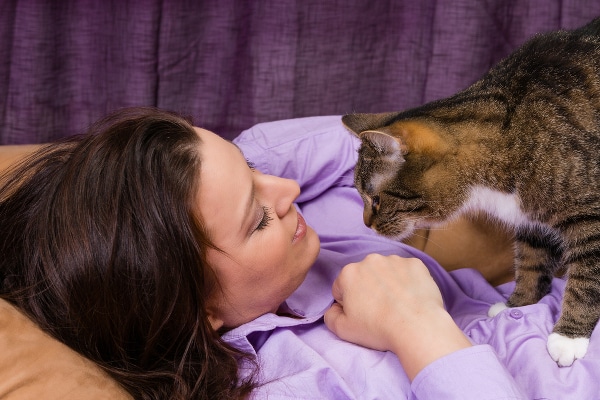
We cat owners normally recognize the alternate-paw “kneading” motion as a holdover from our cat’s early memories of nursing. Kittens press this way to stimulate milk flow from the mama cat. But by kneading your leg or arm, a cat communicates comfort or contentment. Ruth had told me it meant that Ben was thirsty, which had me regularly running to the fridge or faucet. Thankfully, an animal behaviorist cleared this up.
There’s no denying that most cats enjoy the taste of milk and cream. That’s why it’s important that we make smart choices for our cats. Ruth wasn’t necessarily harming her cats (heck, for all I know, maybe they celebrated only one big “special occasion” per year), but generally, it’s better to provide no milk if there’s a chance it could cause harm. Taking milk off the menu still leaves us lots of options for spoiling our cats. Yeowww Catnip was among Ben’s favorites, as it seemed to be a little more potent than other varieties. There are also a number of healthy, tasty, high-quality treats formulated for cats. All-natural, by-product-free choices that Ben liked included PureBites Shrimp treats and Cat-Man-Doo Bonito Flakes. All of the taste, none of the tummy upset.
About the author: Marybeth Bittel is a freelance writer who lives in the Midwest with her wonderful husband, her crazy rescue dog Grant, and her level-headed rescue dog Maizy – all of them Heinz 57 mixed breed types. Marybeth identifies as mostly Italian, so she enjoys feeding family, friends and furkids almost as much as Grant and Maizy enjoy eating. She’s also a marketing communications consultant and former marketing/PR exec. Connect with her on LinkedIn or — to see her latest pet pics (and be careful what you wish for here) — check out her family Instagram feed.








